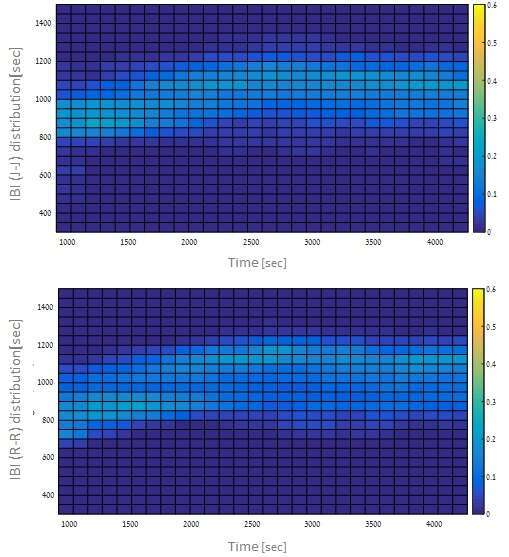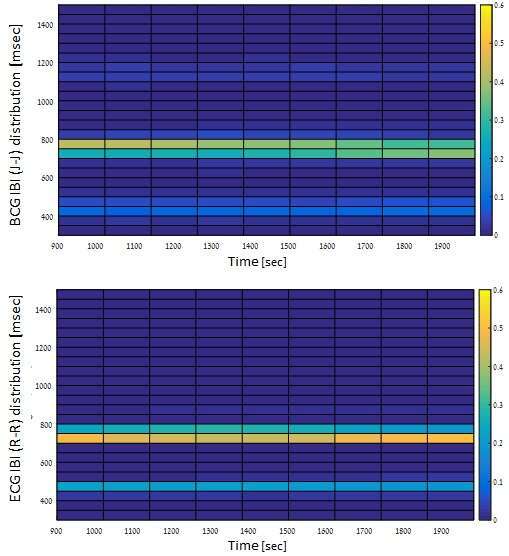
A new tool for long term arrhythmia monitoring
Introduction
A novel system, based on a sensitive piezo-electric sensor (PE system), allows long-term and contact free monitoring of ectopic beats. This system is specifically designed for continuous monitoring and has a proven almost-100% compliance, as it is installed under the patient`s mattress and does not touch him/her.
Methods
In this study we compared the output of the Inter-Beat-Interval (IBI) from the PE system to gold standard ECG to assess the accuracy of the system. First, we compared the raw output of both systems to establish what the new-system`s accuracy is. Second we compared IBI distribution maps for both systems, to evaluate the use of the new system in specific cases.
Results
Fourteen healthy individuals were recorded during a total of 25 nights, with both PE system and lead II ECG sampled at 200Hz. These over-night recordings produced a test set which consists of nearly 500,000 IBIs. Beat-by-Beat comparison between IBI from the 2 systems showed an overall average absolute measurement error of 34.3 milliseconds.
Discussion
Comparison on a beat-by-beat level between mechanical and electrical cardiac activities is affected by physiological-induced changes of the R-J interval. This produce an upper limit to the resemblance between IBI derived from the PE system and ECG signal. In general the PE system estimation was found to have a good correlation with the ECG system and may serve in the future as a tool for continuous and contact free home monitoring of arrhythmias.

Figure 1: A young female with prominent respiratory sinus arrhythmia. Comparison between PE system (upper image)and ECG (lower image).

Figure 2: A patient that was diagniosed with A-Fib. Comparison between PE system (upper image)and ECG (lower image)
Powered by Eventact EMS